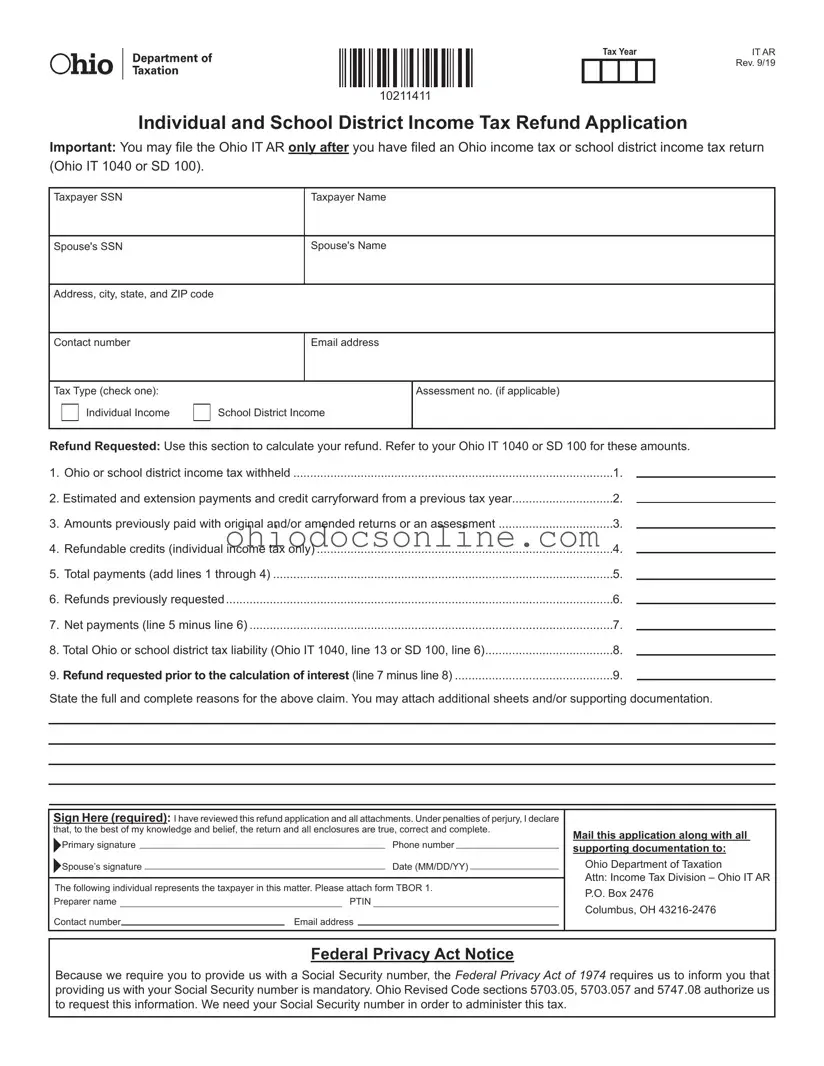Ohio It Ar Template in PDF
The Ohio IT AR form is an essential document used by taxpayers to apply for a refund of individual or school district income taxes. This form can only be submitted after the taxpayer has filed their Ohio income tax or school district income tax return. Completing the IT AR accurately ensures that individuals receive the refunds they are entitled to, streamlining the process of reclaiming overpaid taxes.
Open Editor
